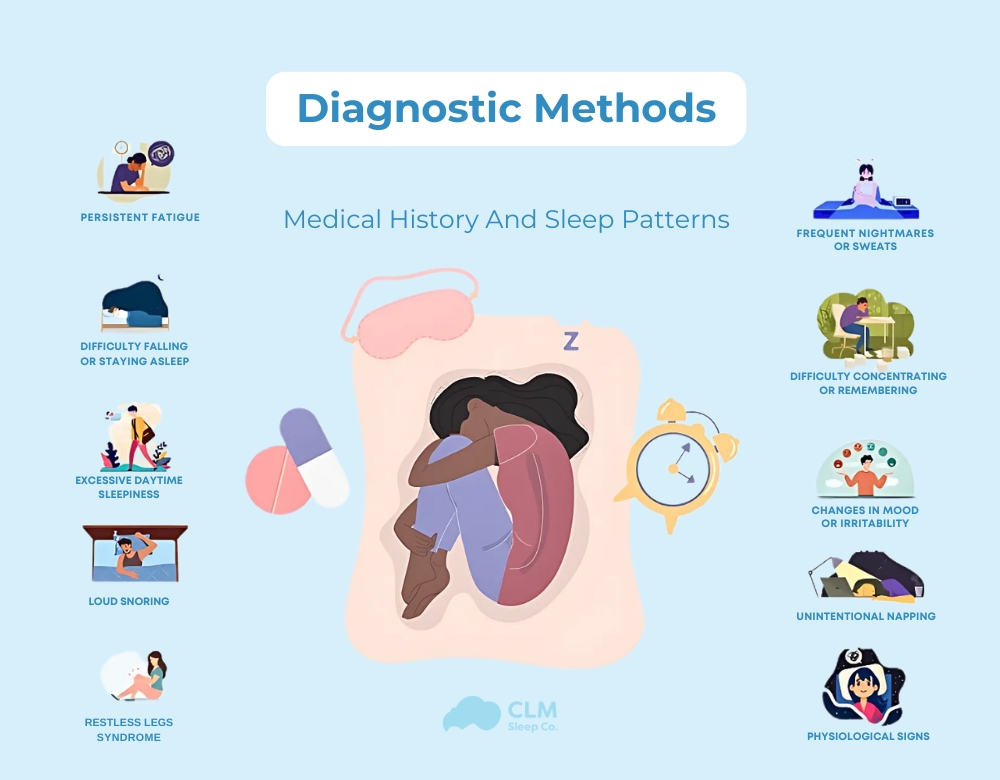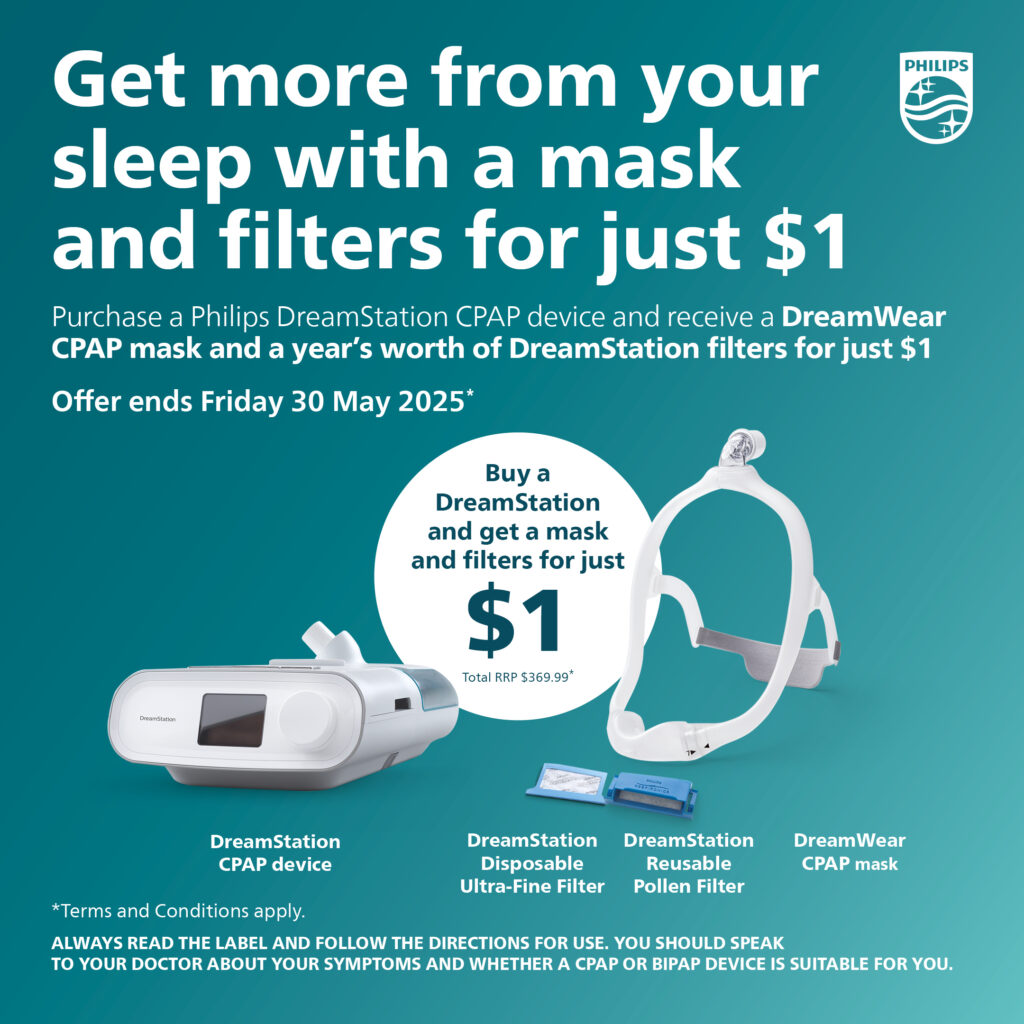Excessive sleepiness during the day, often called daytime somnolence, can indicate poor sleep quality, sleep disorders, or other underlying health issues. While not a disorder itself, it’s a condition that should be addressed seriously. Recognizing the symptoms of excessive daytime sleepiness is crucial for identifying and addressing its root cause. Explore this article on CLM Sleep to learn more.
What is excessive daytime sleepiness?
Excessive daytime sleepiness refers to difficulty staying awake or a heightened urge to sleep during the day. This sleepiness often becomes more pronounced during sedentary activities, such as driving or sitting at work. While occasional drowsiness after insufficient sleep is normal, frequent episodes occurring almost daily for at least three months are classified as excessive daytime somnolence.
Excessive daytime sleepiness disrupts daily routines and can lead to severe consequences:
- Reduced focus and concentration affect workplace and academic performance.
- Increased risk of accidents, especially while driving or operating machinery.
- Emotional stress, irritability, and social withdrawal due to decreased energy levels.
- Impaired decision-making and memory, affect personal and professional life.
If you experience excessive daytime sleepiness (hypersomnia), you may:
- Difficulty staying alert
- Increased irritability
- Memory issues
- Trouble concentrating
- Challenges in retaining new information
- Difficulty making decisions
- Slower reaction times
- Engaging in risk-taking behaviors

What causes excessive sleepiness in the daytime?
Excessive daytime sleepiness is caused by various medical conditions, lifestyle factors, and sleep disorders. Understanding these causes is essential for effective diagnosis and treatment.
Sleep Apnea
Sleep apnea is a common sleep disorder that significantly contributes to EDS:
- Obstructive Sleep Apnea (OSA): Episodes of airway blockage interrupt breathing and disturb sleep cycles, leading to fragmented rest.
- Central Sleep Apnea: The brain fails to send proper signals to muscles responsible for breathing, disrupting sleep quality.
See more: Identifying Sleep Apnea Symptoms: Are You at Risk?
Narcolepsy
Narcolepsy is a neurological condition characterized by sudden and uncontrollable sleep attacks, even during active or engaging activities. It also often includes symptoms like cataplexy (sudden muscle weakness) and vivid dreams during sleep onset.
Idiopathic Hypersomnia
Idiopathic hypersomnia is a condition where individuals experience excessive sleepiness without an identifiable cause. Despite sleeping for extended periods at night, individuals with this condition often feel unrefreshed and struggle with daytime drowsiness.
Restless Legs Syndrome (RLS)
RLS causes uncomfortable sensations in the legs, often described as crawling or tingling, which create an irresistible urge to move them. This restlessness, especially at night, disrupts sleep and leads to daytime fatigue and sleepiness.
Circadian Rhythm Sleep Disorders
Circadian rhythm sleep disorders occur when the body’s internal clock is misaligned with external cues, such as light and activity. Examples include:
- Shift work disorder: Irregular working hours disrupt natural sleep-wake cycles.
- Jet lag: Traveling across time zones can temporarily interfere with the body’s clock.
These disruptions compromise sleep quality, causing fatigue and drowsiness.
Neurological and Psychological Conditions
Certain neurological and mental health conditions can interfere with sleep, leading to EDS:
- Neurological disorders: Diseases like Parkinson’s and Alzheimer’s often cause sleep disturbances.
- Psychological conditions: Anxiety, depression, and post-traumatic stress disorder (PTSD) can make it difficult to fall or stay asleep, resulting in fatigue.
Chronic Sleep Deprivation and Poor Sleep Habits
Busy schedules, irregular sleep patterns, or poor bedtime habits can lead to chronic sleep deficits. Factors contributing to this include:
- Overuse of stimulants like caffeine or alcohol close to bedtime, which disrupts sleep quality.
- Excessive screen time delays the natural onset of sleep.
Medication Side Effects
Some medications induce drowsiness as a side effect, contributing to EDS. These include:
- Antihistamines: Often used for allergies, they can cause sedation.
- Sedatives and Sleep Aids: While intended to promote sleep, they can leave a lingering sedative effect the next day.
- Antidepressants: Certain types may cause fatigue and interfere with daytime alertness.

Diagnostic Methods
Diagnosing excessive daytime sleepiness (EDS) requires a thorough evaluation using various methods to determine the underlying cause. Accurate identification allows for targeted treatment, improving overall well-being and quality of life. Here are the key steps involved in the diagnostic process:
Medical History and Sleep Patterns
Doctors begin by gathering a detailed medical history and understanding the patient’s sleep patterns:
- Sleep routines: Patients are asked about their typical bedtime, wake time, and quality of sleep to identify irregularities.
- Lifestyle habits: Habits such as caffeine or alcohol consumption, exercise routines, and screen time before bed are analyzed to uncover potential sleep disruptors.
- Medical history: Any history of chronic illnesses, medications, or family history of sleep disorders is considered to pinpoint contributing factors.

Polysomnography
Polysomnography, commonly known as a sleep study, is an overnight test performed in a sleep clinic or laboratory to diagnose sleep disorders. It monitors various physiological activities, including brain activity (EEG), breathing patterns, oxygen levels, heart rate, and muscle movements throughout the night.
This test is crucial for detecting conditions such as obstructive sleep apnea (OSA), central sleep apnea (CSA), and other sleep-related abnormalities that may cause excessive daytime sleepiness. By providing comprehensive data, polysomnography plays a significant role in confirming or ruling out potential conditions, enabling accurate diagnosis and effective treatment planning.

Multiple Sleep Latency Test (MSLT)
The Multiple Sleep Latency Test (MSLT) evaluates how quickly a person falls asleep during the day, providing valuable insights into the severity of daytime sleepiness. During the test, patients take scheduled naps every two hours, and the time it takes to fall asleep (sleep latency) is measured.
This test is particularly effective in diagnosing conditions like narcolepsy and idiopathic hypersomnia. Key indicators include short sleep latency and the rapid onset of REM sleep, which are hallmark signs of narcolepsy. The MSLT is an essential tool for identifying and understanding excessive daytime sleepiness.

Epworth Sleepiness Scale
The Epworth Sleepiness Scale is a quick self-reported questionnaire where patients rate their likelihood of falling asleep in everyday situations like reading or sitting in traffic. It quantifies the severity of daytime sleepiness and helps determine the need for further testing. As a simple and effective screening tool, it complements more comprehensive diagnostic methods.
See more: Sleep Apnea Diagnosis
Treatment for Excessive Daytime Sleepiness
Effective treatment of EDS focuses on addressing its root causes while incorporating lifestyle changes:
Addressing Underlying Causes
The first step in managing EDS is to treat the medical conditions contributing to it:
- Sleep Apnea: Continuous positive airway pressure (CPAP) therapy is a common and effective treatment for sleep apnea. It keeps the airway open during sleep, improving oxygen levels and sleep quality, which reduces daytime sleepiness.
- Restless Legs Syndrome (RLS): Medications such as dopaminergic agents or anticonvulsants can help manage RLS symptoms, promoting better sleep.
- Narcolepsy or Idiopathic Hypersomnia: Doctors may prescribe medications to regulate sleep-wake cycles and control sudden sleep attacks.
Lifestyle Modifications
Making changes to daily habits and routines is critical for combating excessive daytime sleepiness:
- Maintain a Consistent Sleep Schedule: Going to bed and waking up at the same time each day, including weekends, helps regulate your internal clock.
- Avoid Stimulants Before Bedtime: Limit the consumption of caffeine, nicotine, and alcohol in the evening, as these can interfere with falling and staying asleep.
- Create a Calming Bedtime Routine: Engage in activities like reading, meditation, or listening to soothing music before bed to signal your body that it’s time to relax.
- Regular Exercise: Incorporating moderate physical activity into your routine improves overall sleep quality. However, avoid vigorous exercise close to bedtime, as it can have a stimulating effect.
See more: Effective Ways to Heal Sleep Apnea Naturally for Better Health
Supportive Treatments
In addition to treating the underlying causes and improving sleep hygiene, supportive therapies can help manage persistent EDS symptoms:
- Wake-Promoting Medications: Drugs like modafinil or armodafinil are prescribed to improve wakefulness in individuals with conditions like narcolepsy or residual sleepiness despite other treatments.
- Cognitive Behavioral Therapy (CBT): This form of therapy helps address psychological factors that may be disrupting sleep, such as stress, anxiety, or negative thoughts about sleep.

Preventive Measures for Excessive Daytime Sleepiness
Excessive daytime sleepiness (EDS) can significantly impact daily life, but proactive measures can help prevent it. By adopting healthy sleep habits and creating a conducive environment for quality rest, you can maintain alertness and energy throughout the day.
- Prioritize 7-9 hours of sleep: Maintain a consistent sleep schedule with 7-9 hours of rest each night, even on weekends, to regulate your internal clock and improve sleep quality.
- Reduce screen time and stimulants: Avoid screens at least an hour before bed, as blue light delays melatonin production. Limit caffeine, nicotine, and alcohol in the evening to improve rest.
- Optimize your sleep environment: Ensure your room is quiet, dark, and comfortable. Use earplugs, blackout curtains, and a supportive mattress to create the perfect sleeping conditions.
- Practice relaxation techniques: Incorporate mindfulness meditation, deep breathing, or muscle relaxation exercises into your routine to reduce stress and prepare for restful sleep.
Conclusion of the article
Excessive daytime sleepiness (hypersomnia) is more than just feeling tired; it’s a condition that can significantly impact your quality of life and overall health. By understanding the causes, recognizing the symptoms, and seeking timely diagnosis and treatment, you can regain control of your energy and daily productivity.
If you’re experiencing persistent daytime sleepiness, it’s essential to address the underlying issues. Explore diagnostic options with CLM Sleep Services to uncover the root cause and take the first step toward better sleep health. For effective treatment solutions, including CPAP devices and accessories, visit CPAP Discount. Don’t let excessive daytime sleepiness hold you back—take action today for a healthier, more energized tomorrow.





